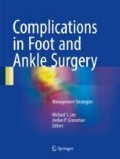Abstract
As surgeons, our incision is one of the most important steps during the surgical procedure. Not only does it allow us access to the anatomy below, but it is a representation to the patient of our work. Although much of incision healing is based on patient factors such as underlying medical comorbidities and a patient’s collagen, we as surgeons can optimize many factors of incision wound healing. Taking care not to skive our incision, minimizing tension with retraction, ensuring adequate return of vascularity, and appropriate hemostasis are a few examples of ways we can contribute to optimal incision healing. However, when incisions have complications and do not heal optimally, we, too, are responsible again for managing the wound and optimizing its healing potential.
Access this chapter
Tax calculation will be finalised at checkout
Purchases are for personal use only
References
Anderson DJ, et al. Strategies to prevent surgical site infections in acute care hospitals. Infect Control Hosp Epidemiol. 2008;29:S51.
Hidron AI, et al. NHSN annual update: antimicrobial-resistant pathogens associated with healthcare-associated infections: annual summary of data reported to the National Healthcare Safety Network at the Centers for Disease Control and Prevention, 2006-2007. Infect Control Hosp Epidemiol. 2008;29:996–1011.
Barie PS. Surgical site infections: epidemiology and prevention. Surg Infect. 2002;3:59.
Haridas M, Malangoni MA. Predictive factors for surgical site infection in general surgery. Surgery. 2008;144:496.
Kompatscher P, et al. Comparison of the incidence and predicted risk of surgical site infection after breast reconstruction. Anesth Plast Surg. 2003;27(4):308.
Malone DL, et al. Surgical site infections: reanalysis of risk factors. J Surg Res. 2002;103(1):89.
Franz MG, et al. Optimizing healing of the acute wound by minimizing complications. Curr Probl Surg. 2007;44:679.
Hollander JE. Wound closure options. In: Singer AJ, Hollander JE, editors. Lacerations and acute wounds: an evidence-based guide. Philadelphia: FA Davis; 2003.
Coulthard P et al. Tissue adhesive for closure of surgical incisions. Cochrane Database Syst Rev. 2002; (3):CD004287.
Harrington G, et al. Surgical-site infection rates and risk factor analysis in coronary artery bypass graft surgery. Infect Control Hosp Epidemiol. 2004;25:472.
Tsukada K, et al. Body fat accumulation and postoperative complications after abdominal surgery. Am Surg. 2004;70:347.
Patel VP, et al. Factors associated with prolonged wound drainage after primary total hip and knee arthroplasty. J Bone Joint Surg Am. 2007;89:33.
Franz MG, et al. Guidelines to aid healing of acute wounds by decreasing impediments of healing. Wound Repair Regen. 2008;16:723.
Leaper D, et al. Prevention and treatment of surgical site infections: summary of NICE guidance. BMJ. 2008;337:a1924.
Dixon AJ, et al. Randomized clinical trial of the effect of applying ointment to surgical wounds before occlusive dressing. Br J Surg. 2006;93:937.
Sommerlad BC, Creasey JM. The stretched Scar: a clinical and histological study. Br J Plast Surg. 1978;31:34–45.
Author information
Authors and Affiliations
Corresponding author
Editor information
Editors and Affiliations
Rights and permissions
Copyright information
© 2017 Springer International Publishing AG
About this chapter
Cite this chapter
Jennings, M.M., Sue, A., Todd, N. (2017). Management of Incision Complications. In: Lee, M., Grossman, J. (eds) Complications in Foot and Ankle Surgery. Springer, Cham. https://doi.org/10.1007/978-3-319-53686-6_4
Download citation
DOI: https://doi.org/10.1007/978-3-319-53686-6_4
Published:
Publisher Name: Springer, Cham
Print ISBN: 978-3-319-53684-2
Online ISBN: 978-3-319-53686-6
eBook Packages: MedicineMedicine (R0)

